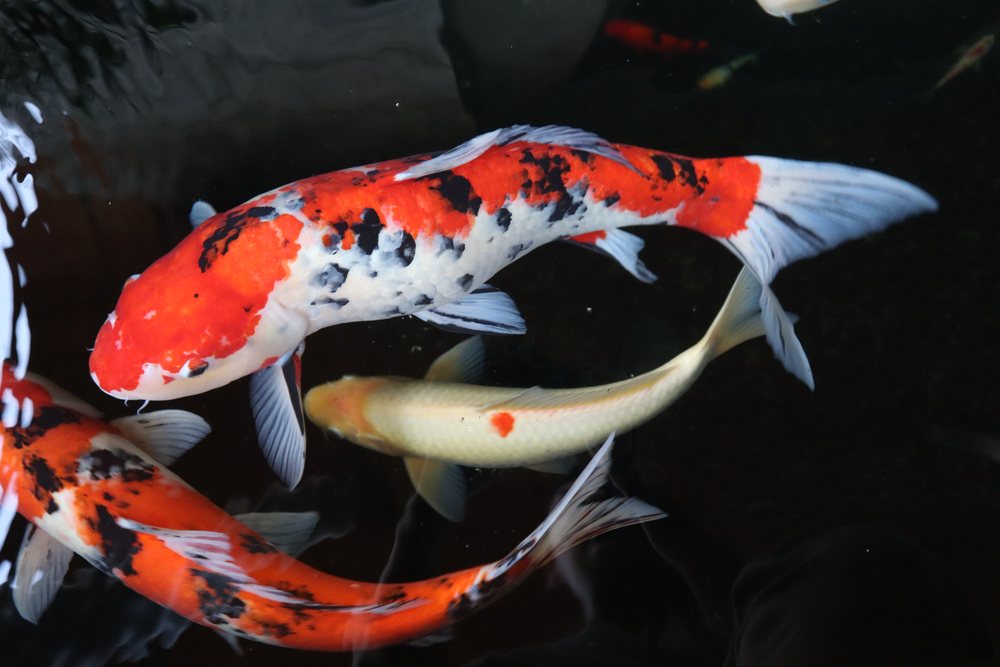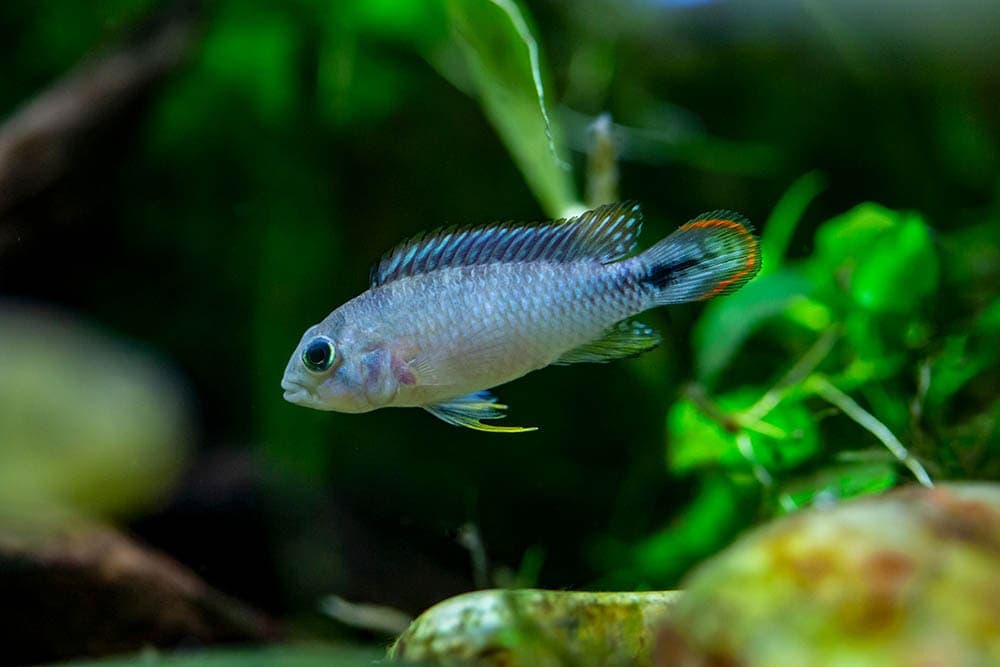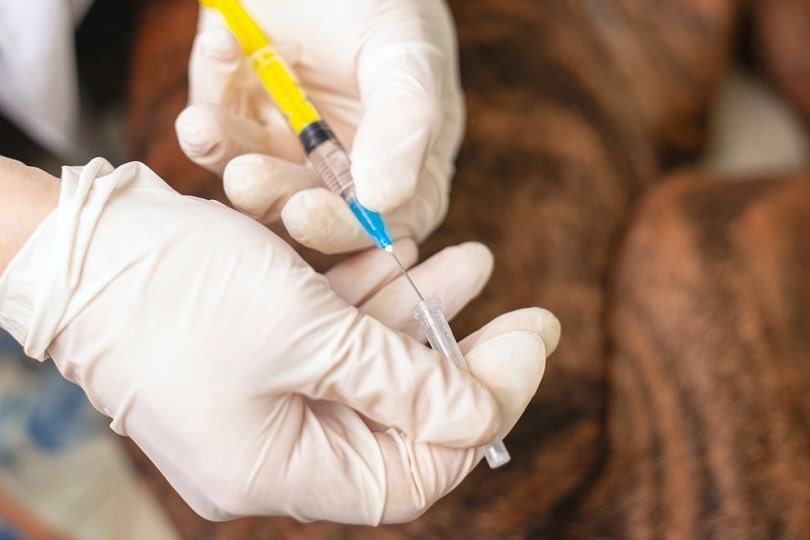How to Lower Ammonia Levels in Fish Tank: 7 Vet-Approved Tips

Updated on
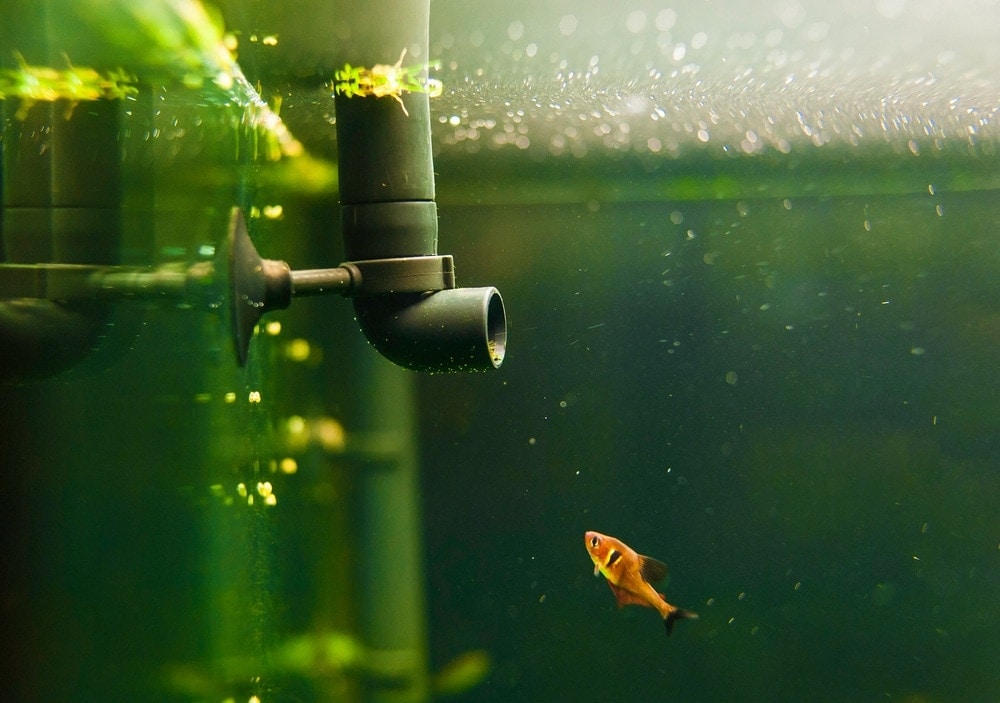
Click to Skip Ahead
For fish keepers, ammonia in an aquarium is considered a major problem. It’s highly toxic for fish and aquatic plants. In high concentrations, it is also toxic for the beneficial bacteria that live in an aquarium.
Ammonia will quickly poison and eventually kill all of the plant and fish life in your aquarium. So, we are here today to help you figure out how to lower ammonia levels in your fish tank.
What Is Ammonia?
Ammonia is a colorless gas that has a very distinct odor and is composed of both nitrogen atoms and hydrogen atoms. It has the chemical symbol NH3. It is a naturally occurring substance that is produced by the human body, as well as in nature. It can occur in water, soil, air, and more.
Ammonia makes for a great cleaner, which is why it is used for many industrial cleaning applications, but it is also poisonous, especially if the ammonia level in your fish tank hits a certain amount.
What Causes Ammonia in Fish Tanks?

Generally speaking, if an aquarium has an ammonia reading greater than 0 parts per million (ppm) or 0 milligrams per liter (mg/L), it warrants intervention. Any value above 0 is considered unsafe or high.
If your aquarium has high ammonia levels, any of the following reasons may be to blame.
1. Uneaten Fish Food in the Aquarium
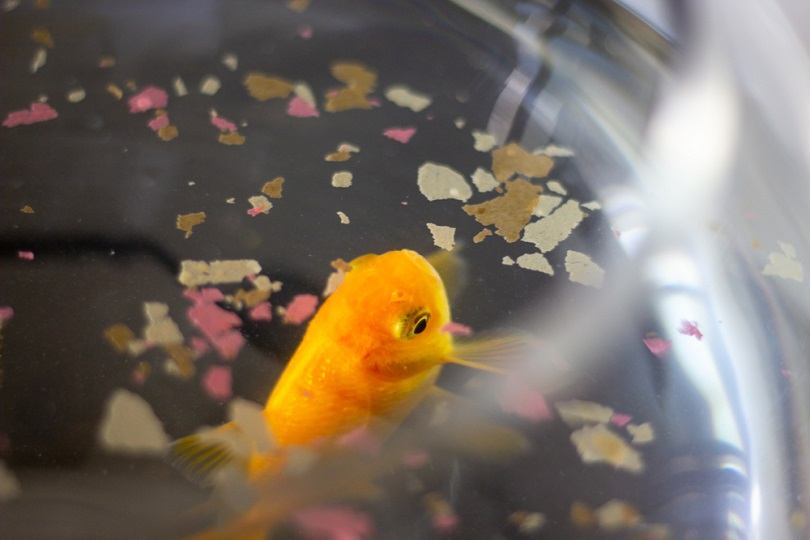
One of the biggest reasons why the ammonia level in your aquarium might be high is because of uneaten food. If uneaten food remains in the tank for too long, it will begin to rot and decompose. As the uneaten food rots and decomposes, it releases ammonia into the water.
2. Decaying Organic Matter
Plants can also be a cause of a high ammonia level in a fish tank. If your plants are not doing well, they may start to rot or decompose in the tank.
If you have rotting plants in your tank, like with uneaten fish food, they will begin to create and release ammonia into the aquarium, which can then lead to excessive ammonia nitrite levels.
Likewise, a fish that has perished and gone unnoticed will begin to decompose and rot, causing an ammonia spike.
3. Excessive Fish Waste
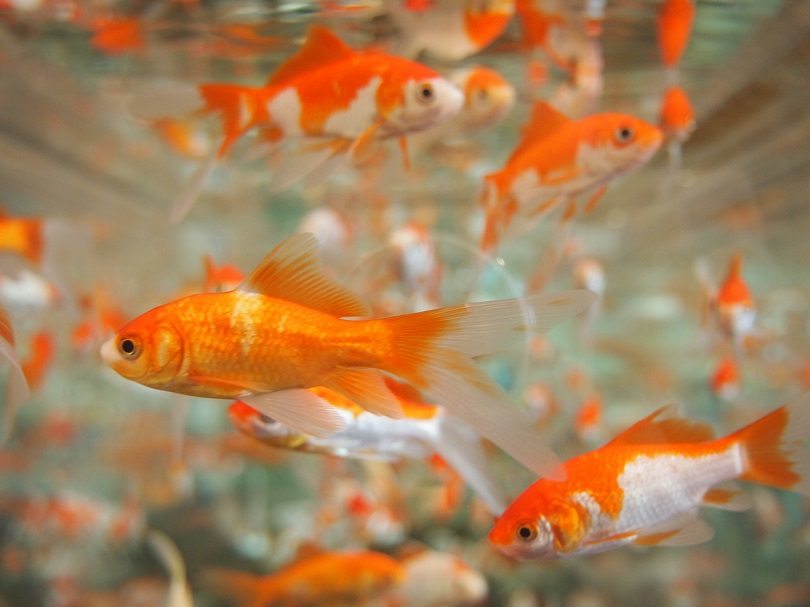
If you have an overstocked fish tank, especially if you feed them too much, they will create a large amount of waste. Fish waste is a leading cause of excess ammonia levels in a fish tank. Note that fish naturally produce ammonia as a byproduct of their metabolism. This makes an overstocked tank inherently dangerous.
4. Improper Tank Filtration
Your aquarium filter is the best tool at your disposal to get rid of ammonia in the tank. Your filter is a big part of the aquarium nitrogen cycle, particularly the biological filtration aspect. Beneficial bacteria that grow in the filter break down ammonia in the tank by turning it into nitrite and nitrate.
If your filter is not up to handling the water volume in the tank, you have several fish, the filter is broken, the biological media is old, or you don’t properly clean and maintain your filter, it can quickly lead to this problem.
5. A New Tank – The Nitrogen Cycle in an Aquarium

If you have a new tank with new fish, the number of beneficial bacteria in the tank will be lower than it should be. It takes between 3 to 6 weeks for the little organisms to multiply to the point where they can get rid of excessive levels of ammonia.
A new tank is always going to have excess levels of ammonia until the nitrogen cycle has been completed. Therefore, to ensure that your tank is safe for fish and plants, perform a fishless nitrogen cycle using liquid ammonia.
6. Your Tap Water
Tap water can contain trace amounts of ammonia. Natural levels in groundwater are usually below 0.2 mg per liter, but tap water that has been contaminated (usually with fecal matter) may have high levels of ammonia, which can harm your fish. Such water is also dangerous for human consumption, as ammonia may react with the chlorine added to the water, and there may not be enough chlorine left to disinfect other contaminants from the water source.
7. Nitrogen Cycle Crash
The nitrogen cycle is a biological process in your aquarium and should be considered an entity that ensures that your fish are safe. If the bacteria involved in the cycle ever unexpectedly die off or can’t keep up with the demand of the aquarium, the cycle will crash and an ammonia spike can occur.
- Scrubbing or cleaning the biological filter media with a detergent — You should not scrub, dry out, or add any cleaning chemicals or detergent to your filter. Doing so will kill the bacteria and by proxy, will crash your cycle.
- Adding more fish to an aquarium — Your bacteria colonies need time to meet the new demand placed on them.
- Adding too much liquid ammonia to an aquarium during the cycling process — Ammonia can kill the beneficial bacteria at levels exceeding 5 ppm.
How Does Ammonia Affect Fish?
Ammonia’s toxicity is attributed to the fact that ammonia can displace other ions in your fish’s bloodstream. Chief among these disruptions is the loss of proper potassium utilization. This causes a rapid change in the nerves that carry messages to and from your fish’s brain. With the central nervous system compromised, fish usually perish.
Ammonia is also responsible for disruptions in other body systems, namely the respiratory system. It causes stress by depriving the fish of oxygen.
What Should Ammonia Levels Be in My Fish Tank?
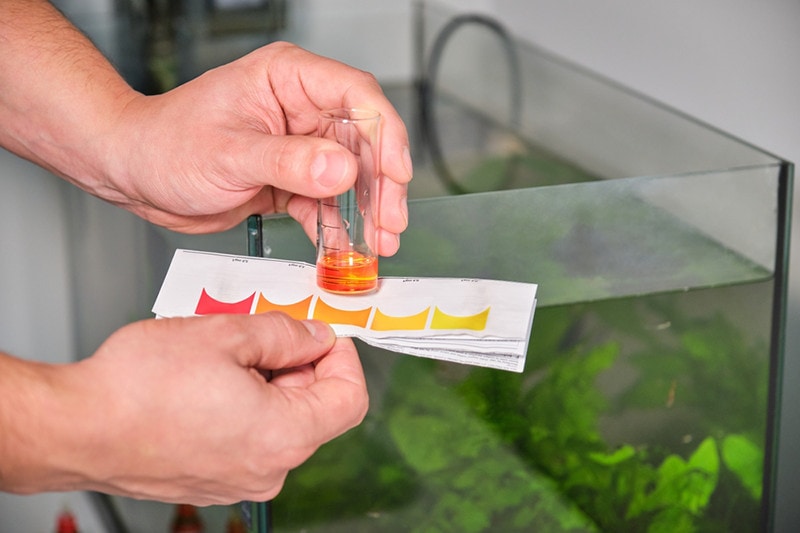
The level of ammonia in your fish tank should be at 0 ppm or mg/L (depending on the units that your test kit uses). Fish are very sensitive, and even small amounts can cause a problem.
Always make sure to test the water to ensure that the levels are acceptable.
Signs That Your Ammonia Levels Are Too High
Ammonia isn’t visible to the eye, so you’ll need to keep an eye out for the signs associated with ammonia poisoning.
- Sudden death
- Erratic swimming patterns (also known as flashing)
- Lethargy
- Poorly coordinated swimming
- Refusal to eat
- Heavy breathing
- Gills appearing red
- Gasping at the surface (also known as piping)
The definitive way to confirm ammonia’s presence in your aquarium is to perform a water test for ammonia using any readily available water test kit. Any reading over 0 ppm (or mg/L) is not ideal for pet fish.
The 7 Ways to Lower Ammonia Levels in Fish Tanks
Now that we have covered what is ammonia in a fish tank, let’s now look at 7 ways of reducing ammonia levels.
1. Changing the Water
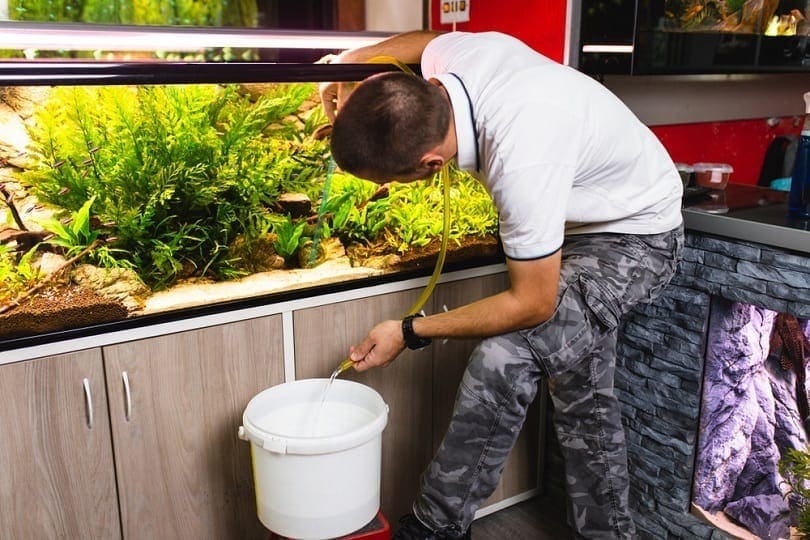
One of the easiest, fastest, and most effective ways of decreasing ammonia levels in the water of your fish tank is to simply replace the old and contaminated water with fresh water.
To be fair, regular partial water changes are something that you should be doing on a weekly basis, anyway. But if you see that there is too much ammonia in the water, you should immediately perform a large (30% to 50%) water change.
When replacing water in your aquarium, ensure that the “new” water is treated with a water conditioner prior to being added. Replacing a large volume of water effectively dilutes the amount of ammonia in your aquarium. While a large water change is stressful for fish, it is a risk that you should take in this circumstance, being the lesser of two evils (with the other evil being ammonia poisoning your fish).
2. Remove Waste & Unwanted Organic Matter
Since rotting food, fish waste, and old plants can all cause ammonia, another easy solution to your ammonia problem is to remove the things creating or releasing it.
Of course, you aren’t going to remove the fish from the tank because they are the whole point of having an aquarium, but there are several other things that you can do.
When you’re performing a water change to treat for an ammonia spike, it’s best to run a gravel vacuum on the substrate to scoop out any rotting food or other organic debris (such as a dead plant).
3. Less Feeding
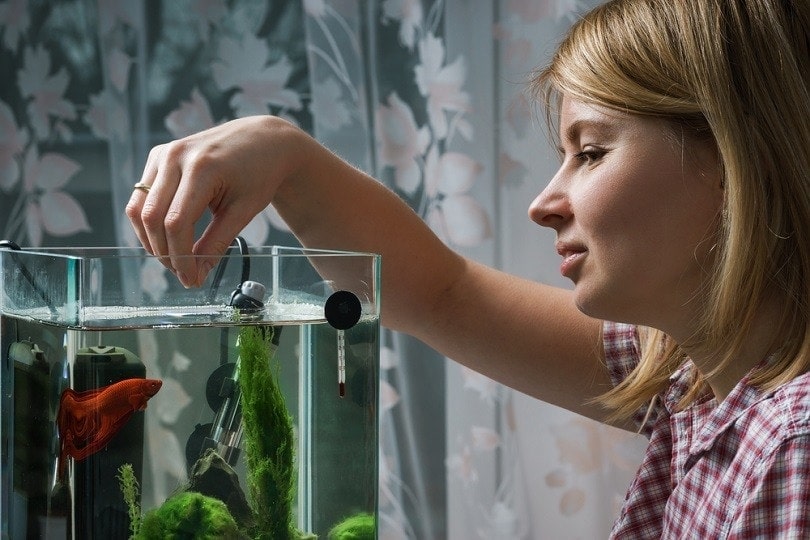
While dealing with an ammonia spike, you should stop feeding your fish for a few days. Most fish can easily handle not being fed for that long, and fish that are being poisoned by ammonia usually don’t have an appetite for food, anyway.
In an otherwise healthy aquarium, you should only feed your fish an appropriate amount of food based on their needs and life stage. Excess or uneaten food should be removed and discarded after a period of about 10 minutes.
4. Healthy Bacteria
Another method that you can try in order to lower the ammonia levels in your fish tank is to introduce some healthy and beneficial bacteria into the equation.
- Commercial cycling bacteria can be purchased from most pet stores. If you choose to do this, look for products that contain Nitrosomonas or Nitrosococcus
- If you have another healthy tank, try taking filter media from that tank and adding it to your aquarium’s filter.
- A similar trick can be done using gravel or substrate, but it isn’t as effective as using filter media.
5. Lowering the pH Level
Ammonia becomes more lethal in alkaline water than in water with a pH of 7.0 (which is considered neutral). If your fish can tolerate lower pH levels, you can add products to your aquarium to lower the pH accordingly.
Just remember that your fish have a specific pH range that they need to live. Lowering the pH levels in your fish tank will not actually remove the ammonia from the water, but it will make it less potent and dangerous to your fish.
6. Upgrade Tank Size
Another quick fix is to move your fish to a larger tank if you have one at hand. The principle here is similar to that of a water change, but instead of replacing water to dilute the ammonia, you’re increasing the volume of water in the aquarium to dilute the ammonia (and other toxins).
For example, the amount of ammonia needed to produce a reading of 1 ppm in a 10-gallon tank will only produce a 0.5 reading in a 20-gallon aquarium and a 0.25 reading in a 40-gallon aquarium.
This is one of the reasons that it is best to start with a large aquarium when you’re new to the fish-keeping hobby; the extra volume of water can be considered a “buffer” that allows more room for mistakes. In larger volumes of water, harmful substances take longer to accumulate in a concentration high enough to harm your fish.
7. Neutralizing Drops
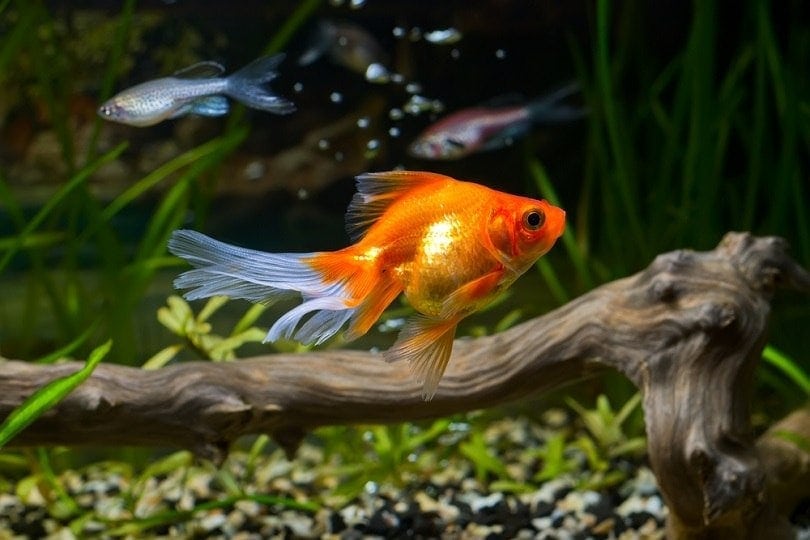
The final method is to use ammonia-neutralizing drops. They will not actually remove the ammonia from the water, but they will convert ammonia to ammonium, a far less toxic (though still not entirely safe) form.
What Is the Best Ammonia Remover for Aquariums?
API AMMO-LOCK Ammonia detoxifier
This is one of the most highly-rated ammonia removers out there, and it’s said to reduce ammonia in tap water and your tank water.
It can be used in saltwater and freshwater tanks. All you have to do is pour it into the aquarium according to the instructions and repeat the process every 2 days until there is no ammonia in the tank. It’s fast, simple, and very effective.
- Very effective
- Easy to use
- A little goes a long way
- Clear instructions
- Excessive use is not healthy for fish

FAQs
How Do You Treat Ammonia Poisoning in Fish?
Ammonia poisoning should be treated as an emergency.
What to Do:
- Immediately perform a large water change of around 30% to 50%.
- Water changes and ammonia tests should be repeatedly performed until ammonia levels are at 0 ppm or 0 mg/L (depending on the kit that you use). Depending on the size of your aquarium, you might have to change the water every 4–6 hours in order to keep your fish safe.
- Stop feeding your fish temporarily.
- If your tank is overstocked, consider reducing the stock size by moving a few fish to another tank. Alternatively, switch to a larger tank.
- Heavily oxygenate the water using air stones and powerful filtration.
- If your tank’s pH is alkaline (over 7.0), use a product to bring it as close to 7.0 as possible.
- Add commercial ammonia binders, aquarium salt, and nitrifying bacteria. Follow the dosing instructions on the product labels. Some products might require carbon filtration to remove them from your aquarium. Activated carbon can be added to most filtration systems to do so.
- Contact your aquatic veterinarian for any secondary issues or diseases that occur in your fish due to the poisoning.
Note that permanent damage from ammonia poisoning isn’t reversible, and these tips do not guarantee the safety of your fish.
How Long Does It Take for Ammonia to Build Up in a Fish Tank?
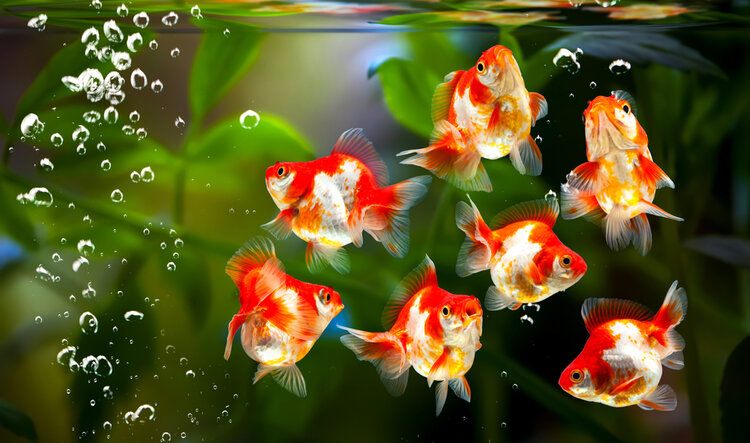
- The bioload in the aquarium
- The volume of the water
- The status of your nitrogen cycle
A higher bioload produces ammonia quicker than a lower bioload. A smaller tank experiences an ammonia spike quicker than the larger one. A lack of beneficial bacteria will cause a spike, while a competent level of healthy bacteria will not enable an ammonia spike to occur.
How Long Does It Take for Ammonia to Go Down?
In a healthy aquarium with an established nitrogen cycle, a 2 ppm spike in ammonia should resolve within 8–12 hours. This is also a test for checking if a fishless cycle has completed.
If the tank is cycled, the ammonia levels will not go down until a meaningful fix is applied. Immediate reduction will happen via water changes, but the nitrogen cycle will not complete for up to 6 weeks. However, the cycle will crash and reset if ammonia levels exceed 4–5 ppm, so it isn’t safe to assume 6 weeks as a definite timeline for a fix.
How Long Does It Take for Fish Food to Turn Into Ammonia?
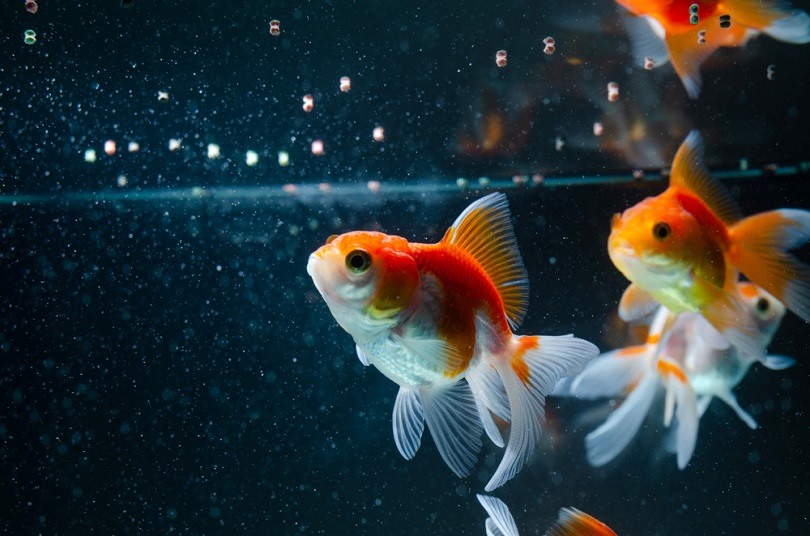
Between the process of decomposition and the bacteria breaking food down, it will take about 2 to 4 days for uneaten fish food to turn into ammonia.
Conclusion
Ammonia, even in the smallest of quantities, can make your fish sick and kill them very quickly, so it’s important to know how to identify and get rid of ammonia, which we have hopefully helped you accomplish. Try to test your water for ammonia on a regular basis, and if there is too much of it, use these methods to rectify the situation while you identify the root cause of the spike.
See also:
- 6 Helpful DIY Fish Tank Lids (With Pictures)
- Why Does My Fish Tank Smell? 7 Common Reasons Explained
Featured Image Credit: mariait, Shutterstock







